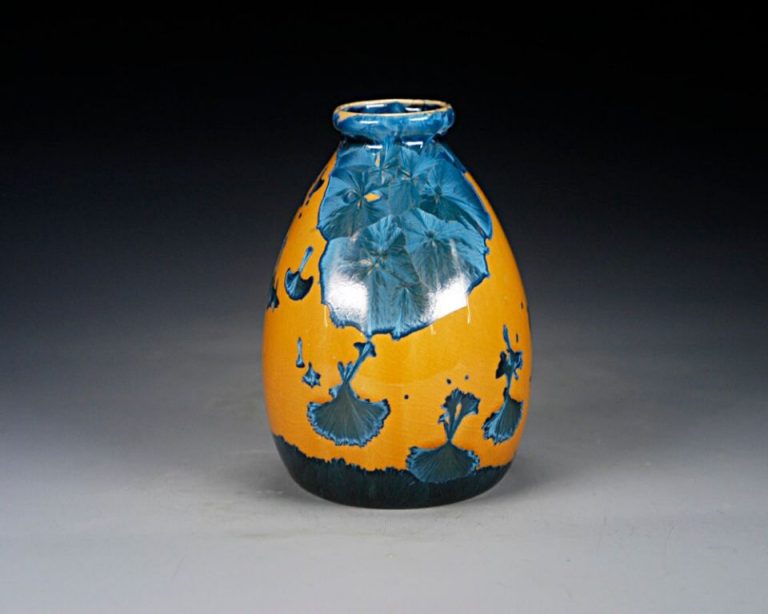Exploring Glazing Techniques For Clay Pottery
Glazing is the process of applying a thin coating of glass-like material called glaze to the surface of pottery. Glazing serves both decorative and functional purposes as it can add color, texture, and luster to pottery while also creating a smooth, non-porous surface.
The earliest known use of glazing dates back to ancient Mesopotamia and Egypt around 1500 BC, where alkali glazes made from ash were developed (Wikipedia). Glazing technology spread across the ancient world and by 3000 BCE, glazed pottery was being produced in China as well (Greyfoxpottery).
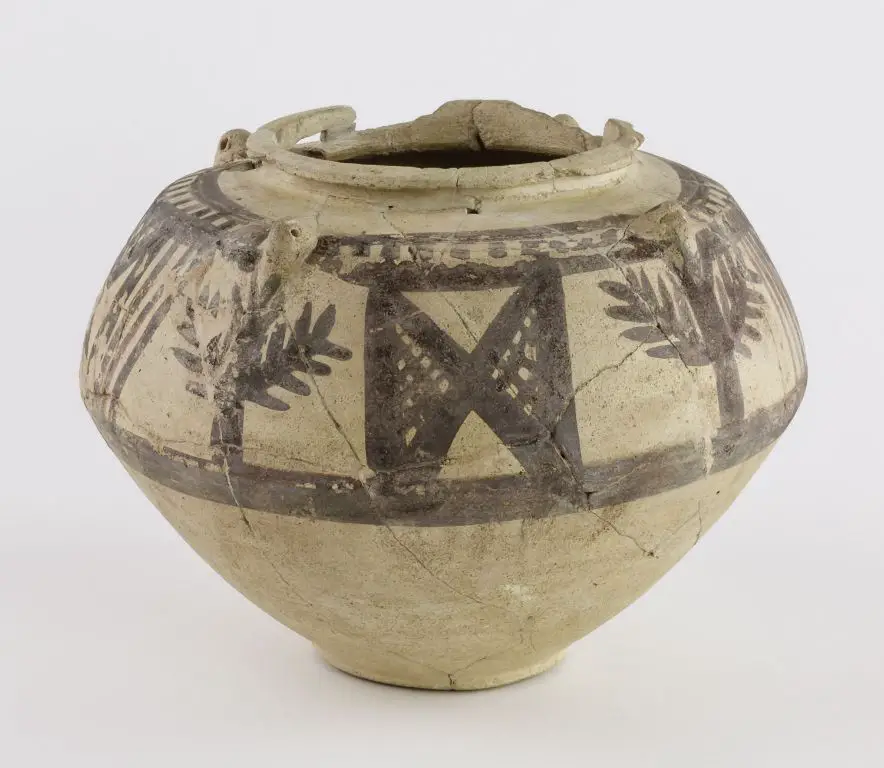
There are many techniques for applying glazes, including brushing, dipping, pouring, and spraying. Glazes can be formulated to melt and fuse with clay bodies at different temperatures depending on the type of clay and kiln used. From decorative low-fire glazes to robust high-fire stoneware glazes, there are numerous options for creative expression through glazing.
Glaze Ingredients
Glazes are made up of several key ingredients that provide specific properties when fired. The main ingredients are:
- Silica – Provides glass formation and stability to the glaze. The most common source is quartz. According to the Raw Materials Dictionary from Sheffield Pottery, silica makes up about 60% of a typical glaze recipe.
- Alumina – Provides glaze hardness and stability at higher temperatures. Common sources of alumina include kaolin and alumina hydrate. Alumina typically makes up about 20% of a glaze.
- Flux – Lowers the melting temperature of the glaze so it vitrifies and becomes glasslike at kiln temperatures. Common fluxes include feldspar, dolomite, and calcium carbonate. Flux content is usually 10-20% of the glaze. (https://bigceramicstore.com/pages/info-ceramics-tips-tip35_understand_glazes)
- Colorants – Added in small amounts to produce desired colors in the fired glaze. Common colorants include metal oxides like cobalt, copper, manganese, and iron.
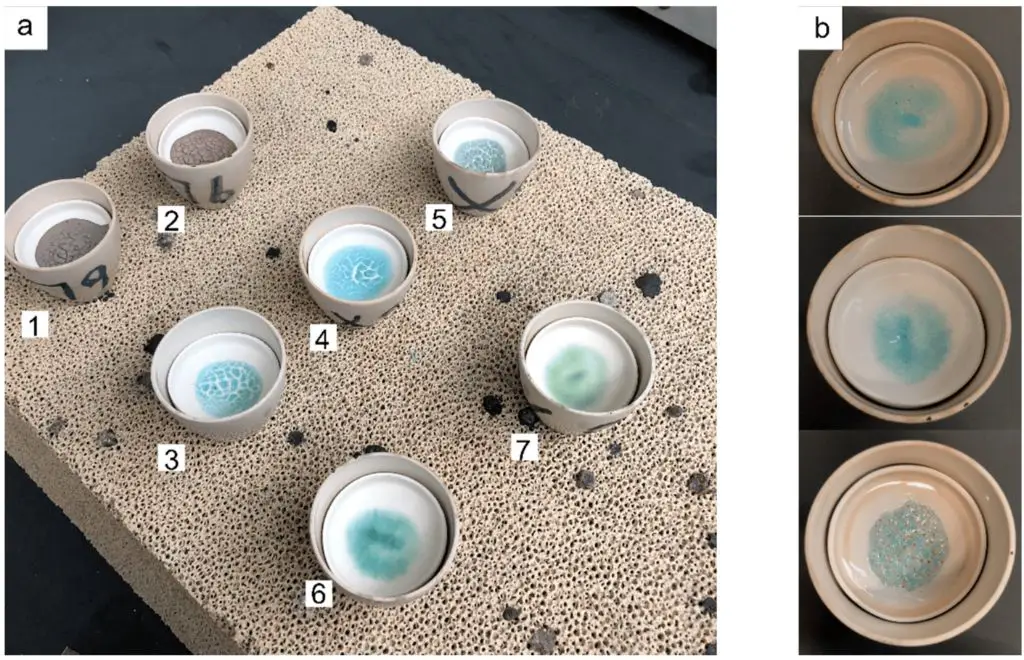
The ingredients must be combined in the right proportions to achieve the desired glaze chemistry and effects. Too much flux can cause glaze running, for example. Glaze recipes are carefully balanced to produce specific properties in the kiln at certain temperatures.
Glaze Types
There are several major categories of glazes that are commonly used in pottery, classified according to their firing temperature range. These include:
Mid-Range Glazes
Mid-range glazes are formulated to mature or become glossy within the cone 4-7 temperature range (approximately 2120°F-2280°F). They are commonly used on stoneware and porcelain clays. Mid-range glazes can produce a wide variety of colors and effects. According to The Pottery Wheel, popular mid-range glaze types include celadons, tenmokus, copper reds, and crystalline glazes.
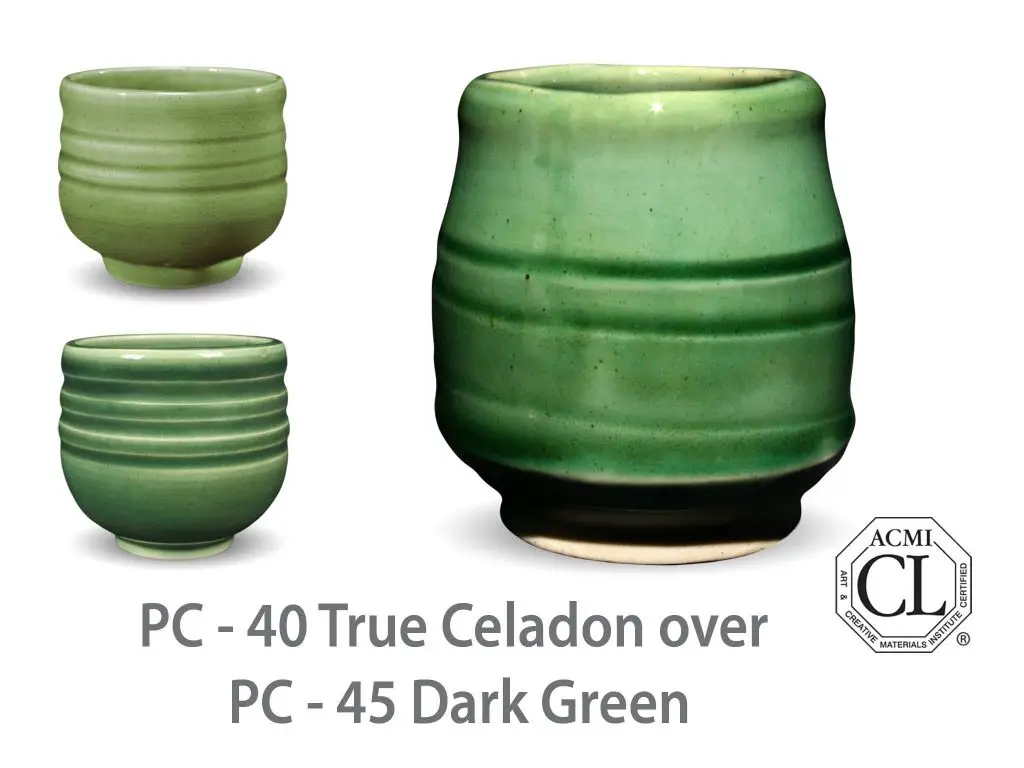
Low-Fire Glazes
Low-fire glazes mature at cone 06-3 temperatures (under 2120°F), making them suitable for earthenware clays. They allow a broad range of bright, vibrant colors. Soul Ceramics notes lead-free earthenware glazes and specialty glazes like raku and horsehair glazes are typically low-fire.
High-Fire Glazes
High-fire glazes are formulated to reach maturity at cone 8-10 temperatures (2280°F-2345°F), making them ideal for firing stoneware and porcelain clays to higher temperatures. According to Glazy, common high-fire glaze types include temmoku, shino, ash, and silky matte glazes. They allow subtle colors and effects.
Applying Glazes
There are several techniques for applying glaze to bisqueware pottery before firing. The most common methods are dipping, pouring, brushing, and spraying.
Dipping involves fully submerging the bisqueware into a container filled with glaze. This allows the glaze to cover all surfaces evenly. Dipping works best for pieces that are symmetrical or only have detailing on one side. It’s important to hold the bisqueware at an angle while removing it from the glaze bucket to allow excess glaze to drip off smoothly.
Pouring glaze directly onto the surface of the bisqueware allows for bold effects and color blending. The glaze can be directed to pool in specific areas or allowed to drizzle freely. This technique requires a thicker glaze consistency. Pouring works well for covering large surface areas quickly. However, it can result in uneven glaze thickness if not carefully controlled.
Brushing glaze on with a soft bristle brush provides precise control for detailed surface effects. Different brush sizes and bristle textures can create unique marks and textures. Brushing also allows mixing multiple glazes on the bisqueware surface. Drawbacks include increased application time and difficulty getting into small crevices. Maintaining a consistent coat thickness while brushing takes practice.
Spraying glaze through an airbrush or spray gun allows for a fine, even mist application. This provides a smooth, consistent glaze layer over the entire surface. Spraying is fast and can reach into crevices. However it requires specialized equipment and good ventilation. Spraying also increases glaze waste from overspray mist.
Potters use combinations of these techniques to achieve their desired aesthetic effects. The glaze application method impacts the final appearance after firing. Testing samples is recommended when exploring new glazing techniques.
Special Effects
Glazes can be manipulated to create unique visual effects on the surface of pottery. Some common special effects include crawling, breaking, crazing, spotting, and flashing. Crawling occurs when the glaze pulls apart, leaving areas uncovered by a thin glaze. It leaves behind a mottled, textured look. Breaking happens when the glaze separates into pools rather than covering the surface evenly. This gives areas of thicker glaze next to bare clay. Crazing is a network of fine cracks in the glaze, caused by clay and glaze expanding at different rates. Spotting is when small bare or partly bare spots are left on the surface. Flashing refers to areas along the foot, rim, or edges that are thinner and thus show the clay body underneath the glaze. These different effects add visual interest and can be achieved by altering the glaze ingredients, thickness, firing temperatures, and by adding materials like wax or tape prior to glazing.
To intentionally create crawling, a glaze can be made high in magnesium or with zinc oxide added. Going for a breaking effect involves applying a thicker glaze on some areas than others. Crazing happens from using a glaze and clay body with mismatched expansion rates. Spotting occurs when impurities get into the glaze or there are issues with application thickness. Flashing arises from uneven glaze coverage along edges and rims. With testing and experimentation, potters can discover which glaze recipes and applications produce their desired special effects.
Mid-Range Glazes
Mid-range glazes, also known as mid-fire glazes, are formulated to mature at cone 4-7 temperatures (2,045°F – 2,270°F). They are extremely versatile glazes suitable for both functional pottery and sculptural pieces. Mid-range glazes utilize materials like feldspar, silica, kaolin, and metal oxides to achieve their chemical composition and desired effects. Popular recipes include celadons, temmokus, ash glazes, and shinos which can showcase colors like green, blue, gray, brown and natural clay tones. Their mid-level fusion means mid-range glazes display semi-glossy to glossy finishes depending on the clay body. Mid-range glazes are commonly used on stoneware and porcelain.
Amaco, Laguna, Mayco, and Coyote are leading manufacturers of mid-range glazes in a wide variety of colors and effects like iridescence, crackle, matte, and more. Glaze lines like Amaco’s Velvet Underglazes, Mayco’s Stroke & Coat, and Laguna’s Solids offer artists abundant options for decorative, food-safe glazes. Well-known recipes like Amaco’s Amber Celadon and Mayco’s Temmoku provide the luminous celadon greens and rich blacks potters seek in mid-range glazes. With diverse offerings from major brands, mid-range glazes offer functional ware potters as well as ceramic artists the ability to realize their creative vision.
For detailed information on specific mid-range glaze brands, recipes, and firing tips, visit:
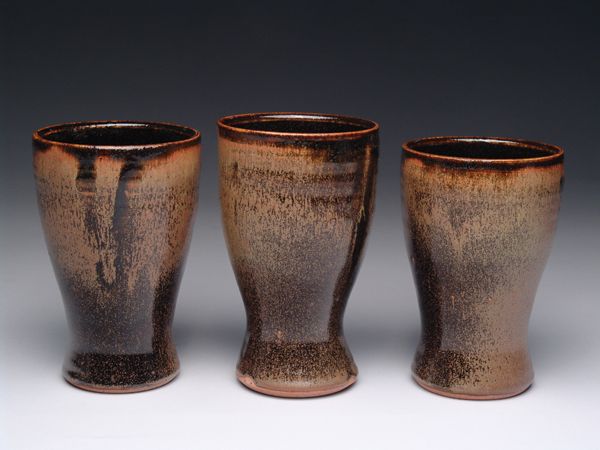
https://www.maycocolors.com/color/mid-range-glazes/
https://www.baileypottery.com/store-dept-pottery-glazes/store-mid-range-glazes-cone-4-6.html
Low-Fire Glazes
Low-fire glazes are formulated to mature at lower temperatures, typically between cones 06 and 02, which corresponds to an approximate firing range of 1800-2100°F. At these temperatures, the clay body is still relatively porous and is classified as earthenware. Low-fire glazes are widely used by ceramic artists and hobbyists because they allow a range of bright, vibrant colors and effects not always possible at higher temperatures. They are especially suitable for handbuilding and sculpture applications.
Typical ingredients in low-fire glazes include various blends of frit, ball clay, kaolin, silica, and metal oxides to produce color and surface effects. Lead-free commercial glaze formulas are readily available from most ceramic suppliers, with a diverse palette of colors like red, blue, green, yellow, black, and white. Popular choices are glossy transparent glazes, as well as semi-matte and satin varieties. In addition to solid colors, there are also low-fire glazes with speckles, crystal effects, iridescence and variations like oxblood and turquoise.1
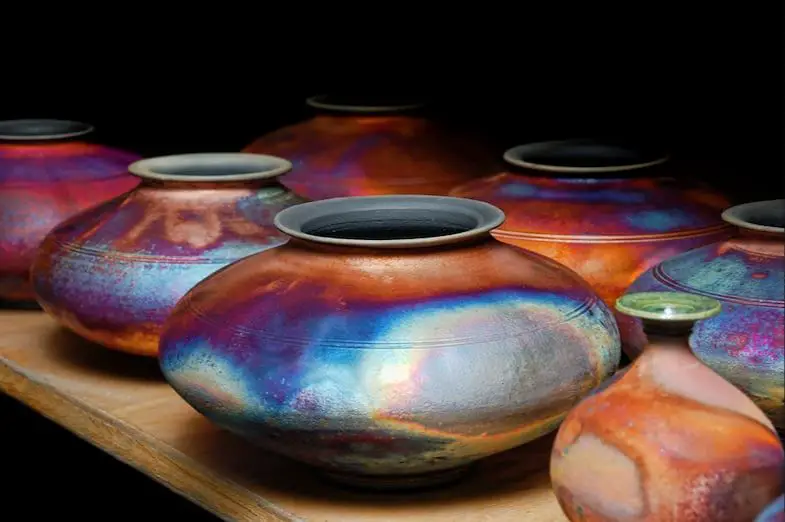
Special low-fire glaze techniques include layered glazing for multicolor effects, reservoir glazing for random patterns, and wax resist glazing for defined areas of color contrast. With the right glaze selection and sufficient testing, low-fire glazes can produce exceptional results while being friendly for the home studio potter.
High-Fire Glazes
High-fire glazes, intended for cone 8-10 temperatures (1,220°C to 1,305°C/2,230°F to 2,380°F), are extremely durable and suitable for both functional and decorative pieces. They mature at high stoneware and porcelain temperatures, resulting in a smooth, glassy surface.
Common high-fire glaze ingredients include feldspar, silica, kaolin, and metal oxides. Feldspar acts as a flux, lowering the melting point of the glaze. Silica provides the glassy quality. Kaolin gives the glaze more body and acts as a binder. Metal oxides like cobalt or copper are added for color.
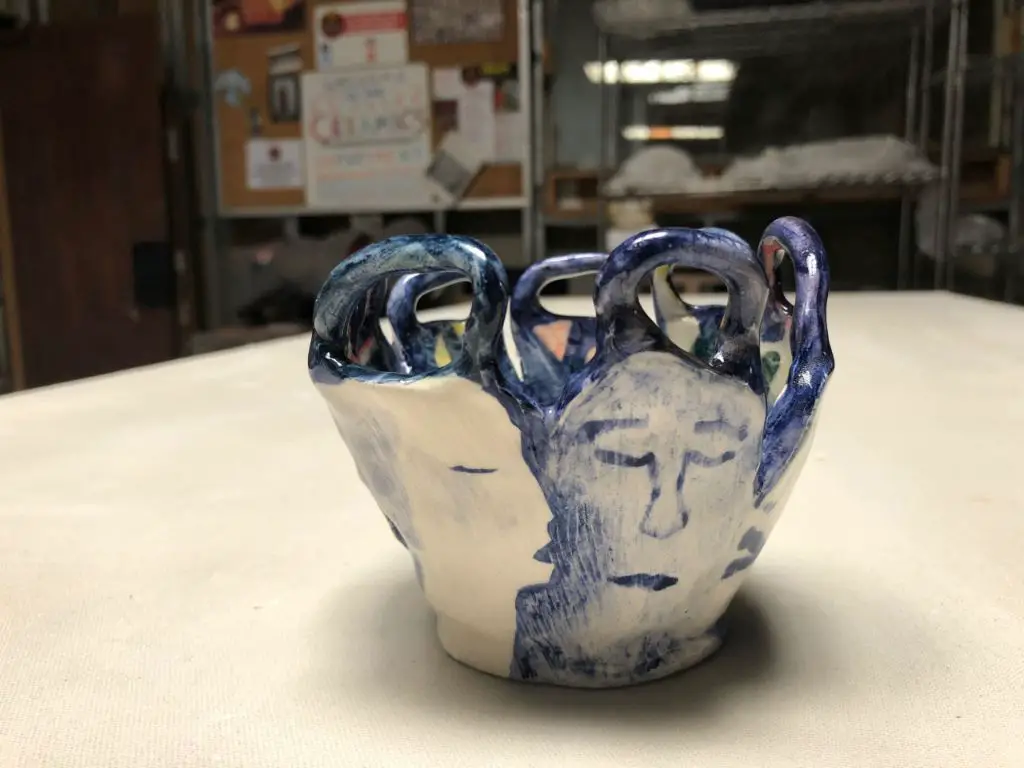
According to AMACO, popular high-fire glaze types include celadons, temoku, copper reds, and ash glazes. Celadons have a rich green color from iron oxide. Temoku glazes feature a breaking pattern of dark brown over a black or deep blue base. Copper reds showcase vibrant orange-red hues. Ash glazes are known for their silvery-gray cracked appearance.
When applying high-fire glazes, it’s important to follow the manufacturer’s instructions closely regarding application thickness. High-fire glazes often require a thicker coating for an even melt and glossy surface, according to Seattle Pottery Supply. Multiple coats may be needed for full coverage and opacity.
Raku Glazes
Raku glazes are specially formulated glazes used in raku firing, which involves removing pottery from the kiln while still glowing hot and placing it into containers with combustible materials to produce unique effects. According to Seattle Pottery Supply, popular raku glaze options include:
White Crackle Raku – Creates white crackle patterns.
Oil Slick Raku – Produces iridescent oil slick effects.
Alligator Raku – Develops crackled alligator-skin like textures.
After a piece is glazed with a raku glaze, it is fired in a raku kiln to approximately 1700°F. Once removed from the kiln, the red hot pottery is placed into a container filled with combustible materials like sawdust or leaves. This produces effects like metallic lusters, distinctive crackling, carbon trapping, and more (Mayco). The post-firing raku techniques create unique finishes not achievable with regular glazes.
Specialized raku glazes are formulated to withstand the thermal shocks of raku firing and interact with the combustible post-firing materials. Raku glazes are typically high in alumina and other minerals that promote crazing, as cracking is desirable. The glaze ingredients and chemistry is designed specifically for raku’s specialized firing process.
Crystalline Glazes
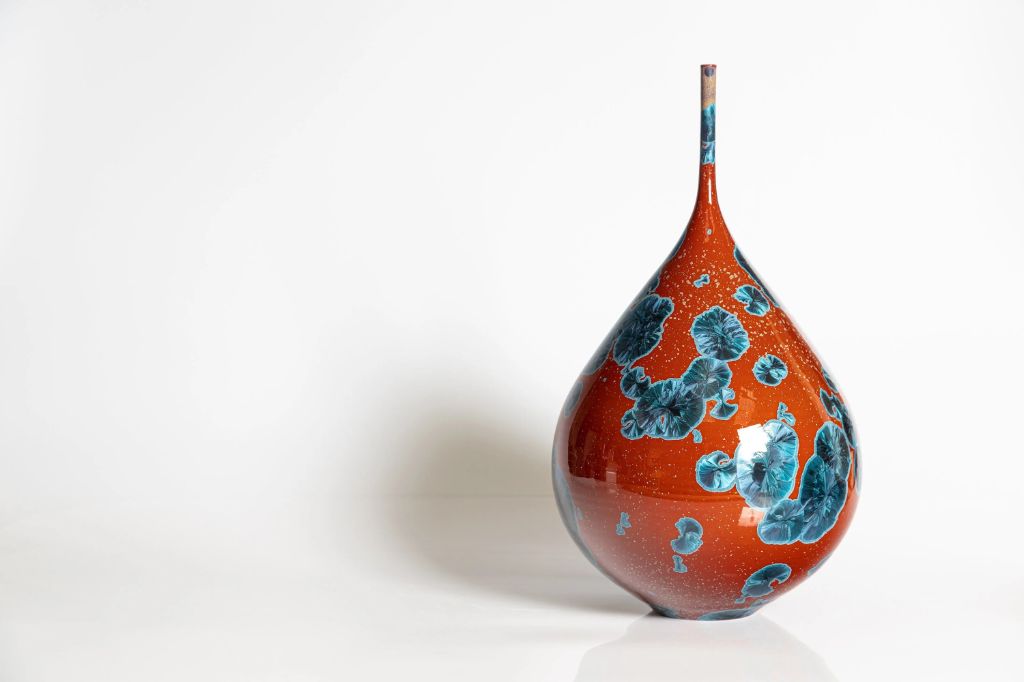
Crystalline glazes are a special type of ceramic glaze that forms visible crystals on the surface during firing. The crystals form when the glaze goes through specific heating and cooling cycles in the kiln, which cause the silica and other ingredients to crystallize. Crystalline glazes require high temperatures, usually around 2300°F (cone 10), to develop properly.
Achieving crystal growth requires carefully controlling the glaze recipe and firing schedule. Most crystalline glazes contain high levels of silica, zinc oxide, and titanium dioxide, which promote crystal formation. The glaze must be heated up and cooled down multiple times during one firing to allow the crystals to nucleate and grow to visible sizes. Rapid cooling at the end helps produce small, intricate crystalline structures.
Zinc oxide is key for achieving delicate lace-like crystals called dendrites. It lowers the melting point of the glaze so the silica can crystallize out at lower temperatures. Titanium dioxide is added to encourage larger, faceted crystals. By adjusting the zinc and titanium oxide levels, potters can control the look of the crystallization.
Firing to the exact peak temperature is critical for crystalline glazes. Just a few degrees lower fails to melt the glaze enough for crystals to form. Too high causes an over-fired, smooth glaze without crystals. Test tiles are required to perfect the firing schedule and glaze recipe for crystallization. When done successfully, crystalline glazes exhibit incredible shiny, textured surfaces ranging from snowflake-like patterns to dense crystalline landscapes.

